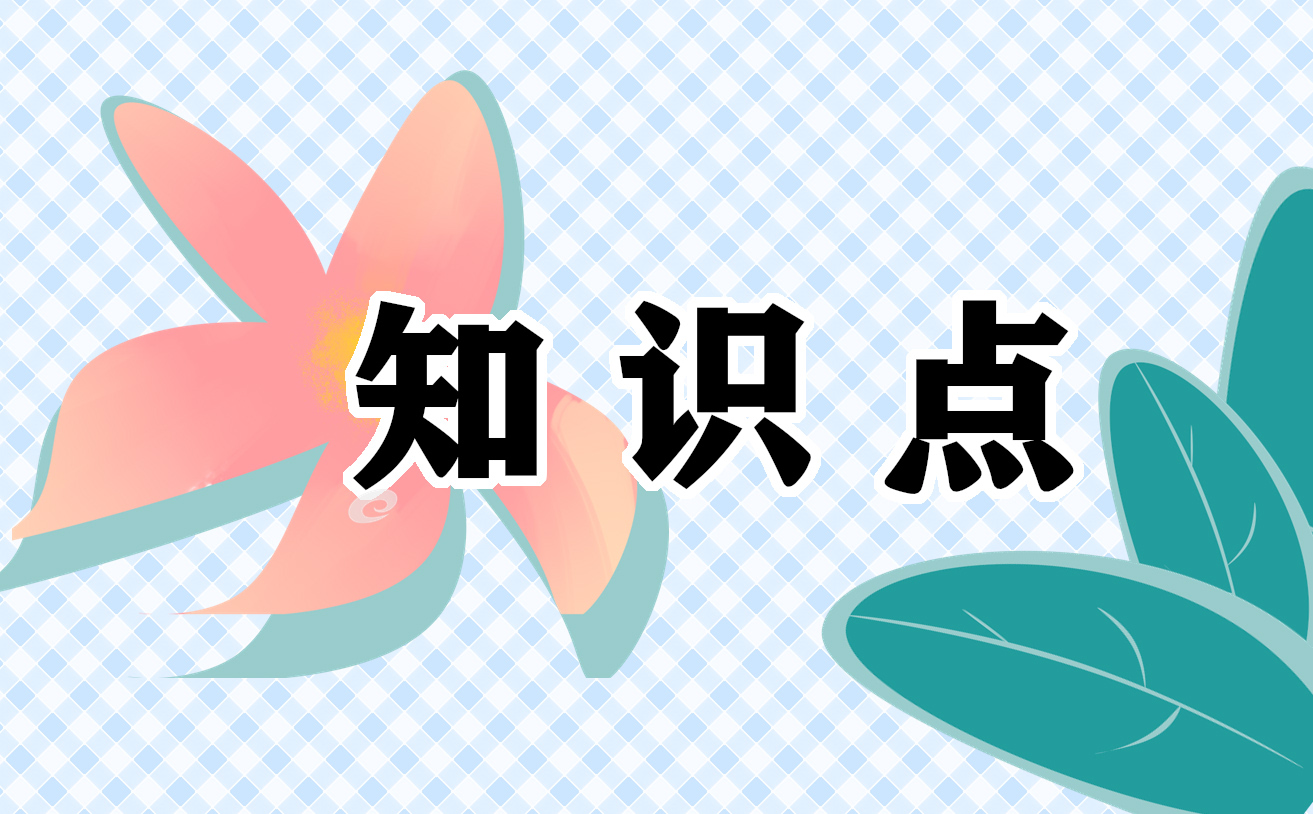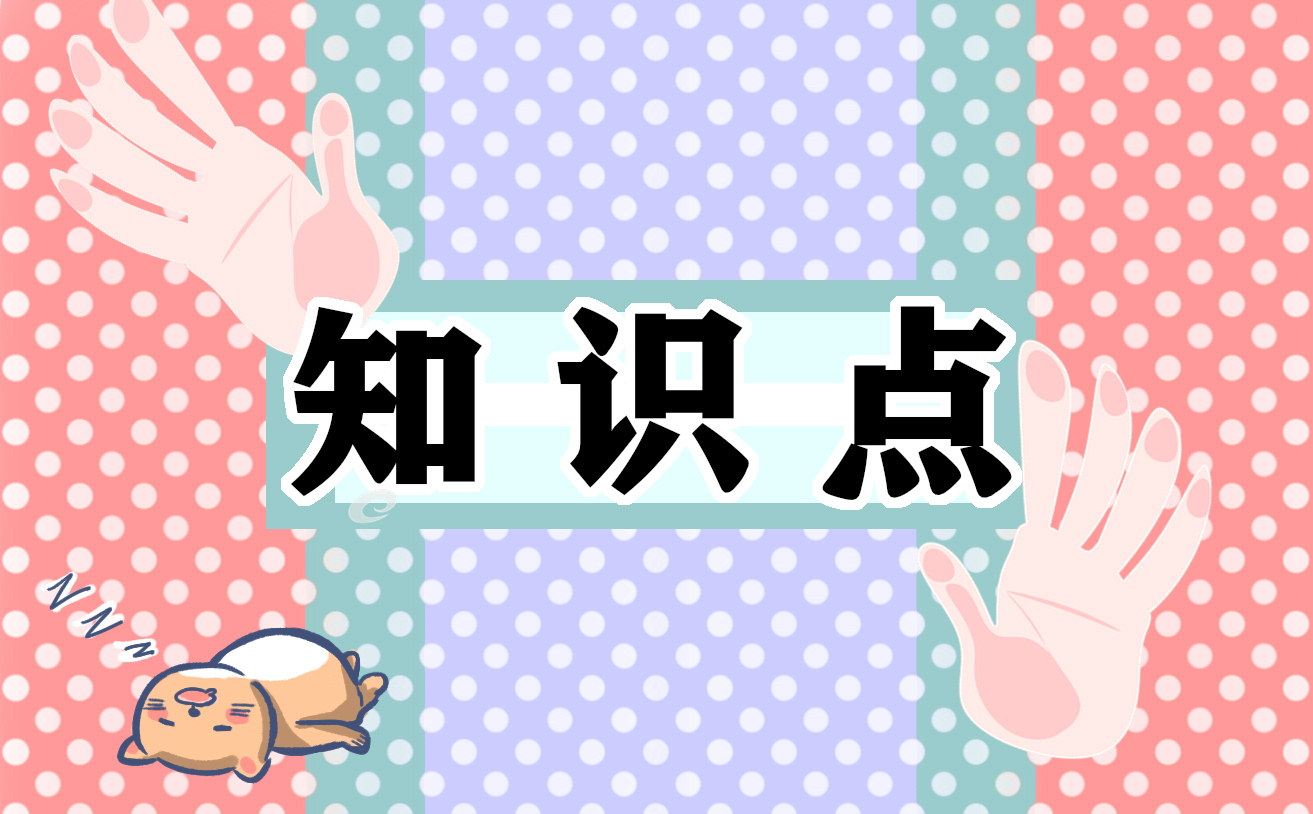need的用法
今天我们来看看英文单词need的用法,你知道有几种呢,快来一起学习吧。下面小编就和大家分享,来欣赏一下吧。
need的用法
need”作为情态动词的用法
一、need表示“需要”或“必须”,通常用于否定句,疑问句,条件句.例如:1.You needn't do it again.你不需要重复做了.2.He needn't worry about it.这件事他无需担心.3.Need he do this homework first?他需要先做这些作业吗?4.Need they fill in the form?他们需要填表吗?二、在否定句中,可以用need的否定形式+不定式完成体.例如:1.We needn't have worried.其实我们不必要慌.2.You needn't have mentioned it.你本来不必提起这件事.3.You needn't have said that when he asked.当他问的时候,你其实不必要说.三、needn't后的不定式间或也能用进行式或被动语态.例如:1.He needn't be standing in the rain.他不必要站在雨中.2.We needn't be waiting in this place.我们不必要在这儿等.3.The hedges needn't be trimmed thisweek.本周树蓠不必要整修.四、其一般疑问句的答语,肯定用must,否定用needn't.Need I go with her?我需要和他一起去吗?Yes,you must.是的,你需要去.No,you needn't.不,你不必去.
编辑本段“need”作为实义动词时,通常用法是
人+need +to do 物+need +doing 物+need +to be done 例如:The room needs cleaning = The room needs to be cleaned.房间需要打扫了.另外,“need”作实义动词时后还可以直接跟名词.请看下面的例子:It is a question that needs very careful consideration.这是一个需要慎重考虑的问题 很简单的方法区别情态动词与实义动词:当need为情态动词时,意思是“必要”,否定为"needn't",后面大多接动名词,表示动作; 当need为实义动词时,意思是“需要”,否定为"don't need",后面大多跟名词.
追答:一、need表示“需要”或“必须”,通常用于否定句,疑问句,条件句。例如: 1.You needn't do it again.你不需要重复做了。 2.He needn't worry about it.这件事他无需担心。 3.Need he do this homework first?他需要先做这些作业吗? 4.Need they fill in the form?他们需要填表吗? 二、在否定句中,可以用need的否定形式+不定式完成体。例如: 1.We needn't have worried.其实我们不必要慌。 2.You needn't have mentioned it.你本来不必提起这件事。 3.You needn't have said that when he asked.当他问的时候,你其实不必要说。 三、needn't后的不定式间或也能用进行式或被动语态。例如: 1.He needn't be standing in the rain.他不必要站在雨中。 2.We needn't be waiting in this place.我们不必要在这儿等。 3.The hedges needn't be trimmed thisweek.本周树蓠不必要整修。 四、其一般疑问句的答语,肯定用must,否定用needn't。 Need I go with her? 我需要和他一起去吗? Yes,you must. 是的,你需要去。 No,you needn't. 不,你不必去。人+need +to do 物+need +doing 物+need +to be done 例如: The room needs cleaning = The room needs to be cleaned. 房间需要打扫了。 另外,“need”作实义动词时后还可以直接跟名词。请看下面的例子: It is a question that needs very careful consideration.这是一个需要慎重考虑的问题 很简单的方法区别情态动词与实义动词:当need为情态动词时,意思是“必要”,否定为"needn't",后面大多接动名词,表示动作; 当need为实义动词时,意思是“需要”,否定为"don't need",后面大多跟名词。
prefer的用法
1,prefer sth to sth.喜欢···而不喜欢···=like```better than````
2,prefer th do sht than do sth喜欢做···而不喜欢做···
3prefer sth更喜欢···
4prefer doing sth to doing sth喜欢做···而不喜欢做···
While的用法你知多少?
最近共学社开启了互评的模式,虽然表面上是为他人评点,似乎费时费力,但实际上却是获益良多。因为在这个过程中,你会看到其他人的闪光点,你可以学起来;而碰到一些有问题的地方,你可以去进一步查证,说服别人,巩固自己。
今天,就拿“while" 举个栗子。While有三种词性:动词、名词、还有我们最熟知,也是最容易混淆的连词。
1.动词
while作为动词用法是最简单的:消磨(时间)
固定搭配有:while away the hours/evenings/days etc.
e.g. The evenings were whiled away in endless games of cards. 晚上的时光都是在没玩没了的牌局中消磨过去的。
2. 名词
while作为名词:一段时间(尤指较短的时间);
固定搭配有:take a while/for a while/ a little(short) while/quite a while/be worth sb.'s while(to do/doing sth.)/make it worth sb's while/once in a while/all the while(始终)
拿all the while举个例子:
He examined her thoroughly, talking softly all the while. 他给她作了彻底的检查,同时始终与她轻声交谈/细声细语地与她交谈。
在了解while作为连词的用法之前,先介绍下连词的种类。
连词分两种:并列连词+从属连词
并列连词:可以连接对等的单词、短语或句子的称为并列连词。最基本的有:and, or ,but,就不一一举例了。
从属连词:这类连词引导的从句充当状语,并且是引导从句的。比如becasue, if等
关于如何区分使用并列连词或从属连词,我网上搜到了一个贴,比较简洁明了:
若两个子句都是独立子句 (independent clauses),那么要使用 and, or, but, so 等对等连接词(并列连词),或者不用连接词而用正确的标点符号,即分号。若这两个子句一为独立子句、一为附属子句 (dependent or subordinate clauses),那么附属子句的前面须使用 though, because, while, when, if 等附属连接词(从属连词)。
3. 从属连词(1),引导时间状语, 可以放在句首&句中
当...的时候
句首: While I was writing the letter, she was doing the dishes.
我在写信的时候,她在洗碗。
句中:We must work hard to gain more knowledge while we are young.
趁着现在还年轻,我们要刻苦学习,获得更多的知识。
4.从属连词(2),引导让步状语从句,放在句首
尽管、虽然(比although, though语气要轻)
e.g. While never a big eater, he did snack a lot.
他虽然胃口从来不大,但零食确实是吃得多。
5.从属连词(3),引导条件状语从句,句首&句中
”只要“,相当于as long as
句首:While there is life, there is hope.
有生命就有希望。
句中:We can surely overcome these difficulties while we are united.
只要我们团结一致,一定能克服这些困难。
6. 从属连词(5),引导原因状语从句,句中
“既然”,相当于since
e.g. I'd like to get it settled today while we are at it.
既然我们着手干了,我想今天就把它解决掉。
7. 并列连词(1),表示转折,句中
“而、可是、但是”,相当于wheras(用于强调两种活动、情况之间的差别)
e.g. Motion is absolute while stagnation is relative.
运动是绝对的,而静止是相对的。
He went out for a walk, while I stayed at home.
他出去散步了,而我却待在家里了。
8. 并列连词(2),表示递进,句中
“并且、而且”,相当于“and what is more"
e.g. The new man-made fibres are more hardwearing than natural fibres and greatly reduce mending, while good ready-made clothes are cheap and plentiful. 新的人造纤维比天然纤维耐磨,因此能大大减少修补工作,而且做好的衣服价廉物美,数量也多。
注:第二种最可能考,因为后一个动词不定式省略了to
not only ... but also的用法解析
一、“not only … but also”的两种用法
1.not only … but also应连接两个相对称的并列成分.例如:
Not only MrLin but also his son joined the Party two years ago.(连接两主语)
I not only play tennis but also practise shooting.(连接两个谓语动词)
He plays not only the piano but also the violin.(连接两个宾语)
They speak English not only in class but also in the dormitory.(两个地点状语)
注:句子 He not only plays the piano but also the violin 不是好的文体,因为 but also 之后的成分与 not only 之后的成分不对称.
2.not only …but also 连接两个分句,并且 not only /until位于句首时,第一个分句中的主语和谓语要部分倒装.例如:
Not only does the sun give us light but also it gives us heat.
Not only didhe speak English correctly,but also he speaks it fluently.
Not only is this young man clever but also he is hard-working.
二、如何避免使用 not only but also
写好英文句子的核心是:先意识到自己使用了哪些滥俗搭配。
汉语:健康教育不仅可以应对青少年肥胖问题,还可以保护他们的自由
朱诺版本的翻译:Health educationamong teenagers not only address the adolescentobesity but also protects their freedom
今天这个句子我也是用的not only but also,看到大家的句子也是清一色的not only but also, 但是有几个娃的句子成功避免了这个比较滥俗的表达,我们来看一下:
沉迷物化生无法自拔的Diana:
Healtheducation tackles juvenile obesity, guarding teenagers' freedom.
Jasmine
Healtheducation, ensuring teenagers’ freedom, helps them stay away from obesity.
通过这两个句子,大家看一下避免not only but also的一个用法是灵活实用伴随状语,这个是大家之前在群里翻译的时候,老师就教过的。我们今天看一下更多的避免使用not only but also的方法吧~
Plain:they were passionate lovers not only onstage but also after stage
Better:they were passionate lovers onstage and offstage
Better:they were passionate lovers onstage and off
介词短语放在文末,言简意赅。
Plain:outside the cinema, she lit a cigarette, not necessarily because she had adesire to smoke, but because she felt the need for warmth.
Better:outside the cinema, she lit a cigarette, as much from the need for warmth asfrom a desire to smoke
通过这个句子,我们学到一种巧妙的写法,就是把not only but also 换成as much as 因为两者都是表达的并列关系。From可以代替用的很俗的because.句子的灵活性就增加很多。
又比如:
在业余时间里,他不仅热衷于海上冲浪,而且还热衷于上网。
不合格: In his spare times, he not only loves surfing, but also web-surfing.
合格: in his free time, he enjoys not only surfing but also online activity.
不合格句子中,有这几个句法错误:
1.业余时间:spare time 应该是单数。
2.not only..butalso一般位于动词后面,而且当中无需逗号。
3.前后的surfing 重复且含义不清楚。
合格范文只是合格而已,not only but also去掉后,我们来看看结果:
优秀:inhis free time, he is a surfer of both waves and the internet.
其实避免使用not only but also的句子前提是,你意识到,这个表达虽然是你最开始学的,宛如there be句型一样印在大脑里。但是这个表达,实在有些俗套,通过今天的讲解,大家可以从语义的角度,对句子增加多样性了。
enough 的具体用法详解
1.enough 用作形容词,意为“充足的;足够的”,在句中可作定语或表语。作定语时,它的位置较灵活,既可放在所修饰词前,也可放在所修饰词后。例如:
We have enough time(time enough)to finish the work.
我们有足够的时间来完成这项工作。
2.enough 用作副词,意为“充分地;足够地;十分”,修饰形容词、副词或动词,位于所修饰词之后。例如:
Are you warm enough in such a light jacket?
你穿这么薄的夹克够暖和吗?
enough往往用在“be+ 形容词+enough+ for+sb. +to do”结构中,注意do后面不接宾语。例如:
The book is easy enough for you to read.
这本书很简单,你们可以看懂。
3.enough用作名词、代词,意为“足够;充分”。例如:
―Would you like another cup of tea?
你想再来一杯茶吗?
―I have had enough. Thank you very much.
我已经喝够了,非常感谢。
我们在使用enough时,还需要注意以下几点:
1.enough不能与no连用。如:
不可以说
I have no enough money to buy a car.
而应说:
I don't have enough money to buy a car.
2.enough 用作形容词时不可被very修饰,但可以用quite修饰。例如:
We have quite enough time.
我们有足够的时间。
3.can't/can never…… enough表示“越……越好;无论怎样……也不过分”。例如:
You can never be careful enough.
你越细心越好。
We can't thank him enough.
我们无论怎样感谢他也不过分。
need的用法你知多少
上一篇:prefer用法详解归纳
下一篇:while的用法知多少




